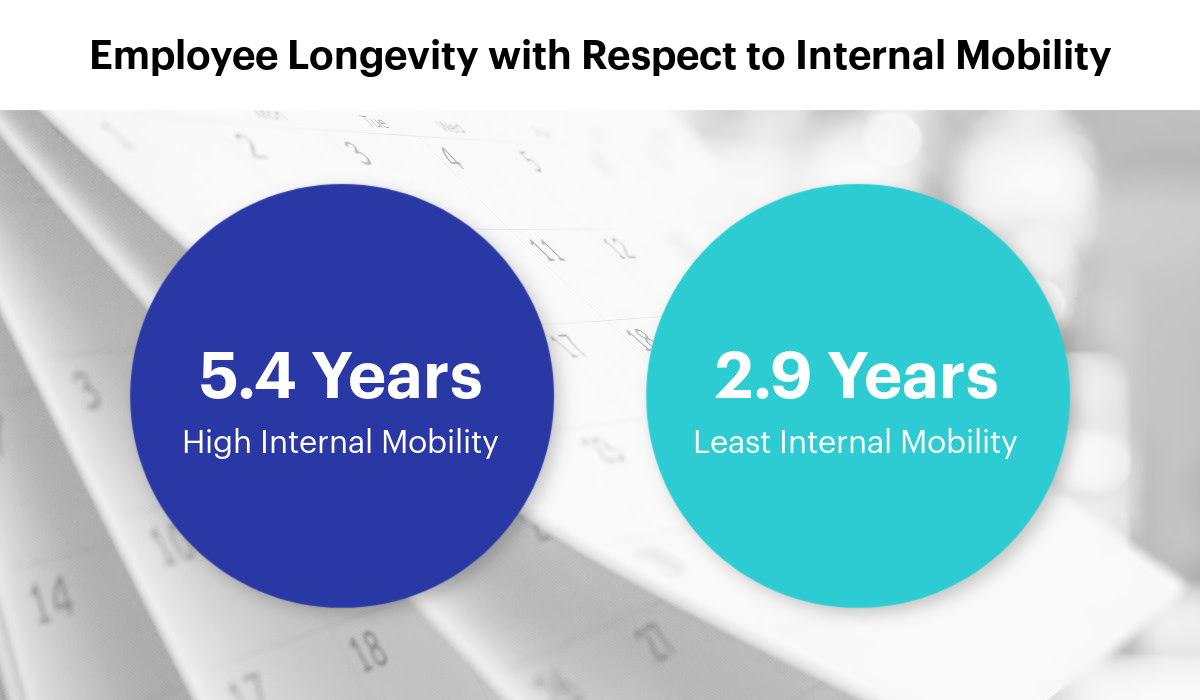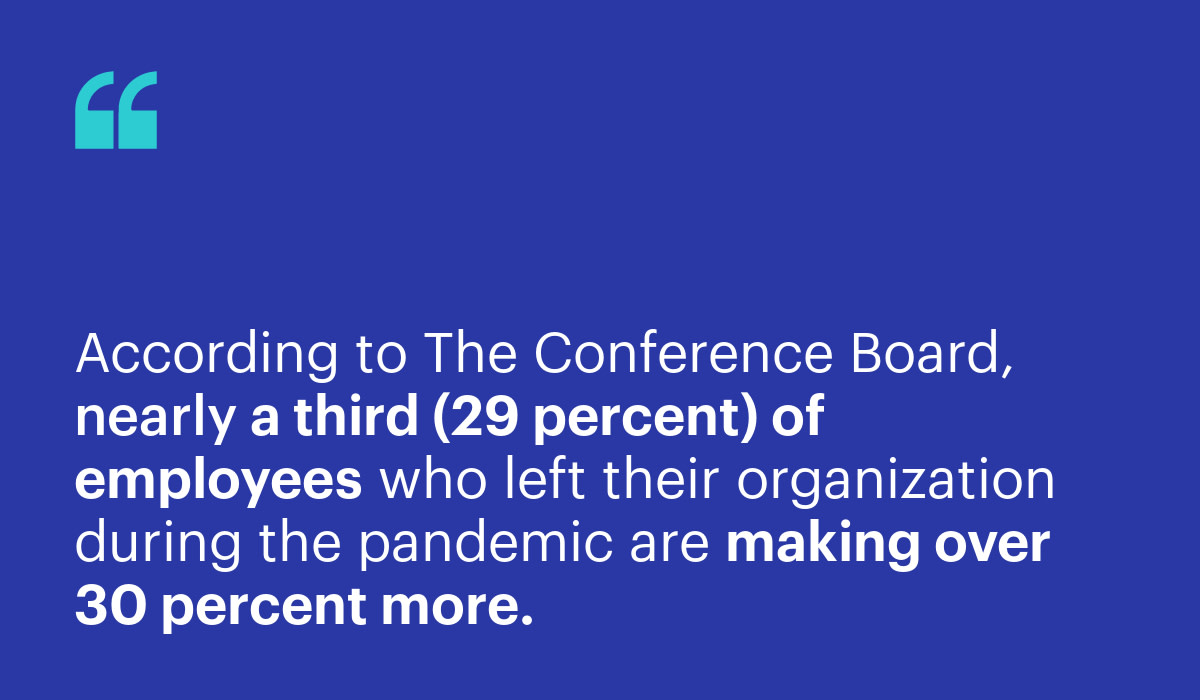The Talent Sourcing Strategy Hidden in Plain Sight
Talent acquisition has gotten increasingly competitive, as companies compete for a diminishing pool of qualified applicants. But the solution to this problem may be closer than you think.

Talent acquisition has gotten harder and harder these days. With so many employees demanding (and getting) remote work, competing for the best employees has become intensely competitive. On one hand, your perfect new team member could be located anywhere. On the other hand, every other company who wants to hire them can do so too. And if you want someone who can work at your location? That’s even harder. But there is a commonly overlooked solution: hire from within.
In the middle of the 20th century, corporations filled roughly 90% of their vacancies through promotions and lateral moves. Today that number is less than a third. Why do so many organizations “go out shopping” when they want to hire for a position without first taking a good look at what’s already in-house? It may feel like more effort to hire and train someone internally (which will likely be a change in role), as opposed to getting someone from the outside who may have already done the exact job.
Familiarity is also a contributing factor. Sometimes there’s no established procedure for hiring internally. Applicant tracking systems may have no easy way of delineating internal candidates versus external candidates. It might be harder to see internal job postings than ones posted externally. Without a clear path to find candidates from within the company, recruiters always return to the same (external) well. There are also political biases: managers might worry that they will ruffle feathers if they “steal” people from another department, or that it will disrupt their team if one person is promoted over another.
But despite these reasons, it makes sense for companies to hire internally. During the Great Resignation, Visier’s Stop the Exit report found that lack of recognition, burnout, and a disengagement with workplace culture were among the top reasons people cited for leaving. Showing that there’s room for growth within the company could improve retention among the entire team. Employees at companies with high internal mobility stay nearly twice as long, 5.4 years average versus an average 2.9 years for those with the least internal mobility.

Hiring externally costs more
According to The Conference Board, nearly a third (29 percent) of employees who left their organization during the pandemic are making over 30 percent more. Want to backfill that position with someone outside the company? You may have to pay up to 30 percent more than what the previous role paid. This can lead to salary compression, where there’s little difference in pay between team members despite differences in ability, experience, tenure or other relevant factors. Worse, it can lead to salary inversion, where the new hire with less experience is earning more than people with the same level who have been at the company longer. Even employees who aren’t strongly motivated by money can be discouraged by the perceived unfairness of pay inequity. People often want to stay at the same company where they know the work, understand the culture, and have a network of coworkers. Tap into that loyalty by searching within the company for those who are stagnating in their current roles and ready to change.

Hiring internally also has the potential to reduce onboarding costs. References are easier if the new manager already has access to the candidate’s network of work contacts, and if your organization requires background checks, those have likely already been completed. The candidate already knows the company culture and systems, so ramping up to proficiency is likely to take less time. You also bypass the common phenomenon of new hires having higher attrition rates than established employees; there’s much less reason to fear a “bad hire” or a “bad cultural fit” if the candidate has already been with the organization for a while.

Promote now or backfill later
Switching companies has a cost for both the company and the employee. The institutional knowledge an employee takes when they leave a company can’t easily be replicated. However, employees who feel like they can’t get ahead in their current organization often look elsewhere. Promoting internally doesn’t just solve your immediate staffing need, it sends the message that your organization is a place where people can grow their careers. Seeing their coworker’s extra work rewarded will incentivize current employees to go the extra mile for their own career. Meanwhile, looking externally for senior positions can disincentivize top performers who feel they should be next in line. Challenging current employees improves retention for those who are on the fence about leaving. The Conference Board surveyed employees who were considering leaving and found 29 percent of respondents indicated that they would stay if offered a promotion. Fill an empty role and increasing retention of disengaged employees at the same time by giving them a reason to stay.
Improve diversity, equity, and inclusion organically
Hiring internally can also help with diversity and inclusion efforts. DEI isn’t just a function of hiring, but of providing opportunities to women and disenfranchised minorities. Promoting from within, especially when coupled with learning and development efforts, can improve diversity within your mid-and-higher level leadership ranks. Research shows representation of people of color (both men and women) decreases as career levels rise. If your organization’s people analytics tools show the decrease in your own organization, nurture the diversity of your workforce by increasing the internal mobility of employees within your own organization.
Skills development
Establishing a pattern of hiring internally can build a virtuous circle of skills development. By hiring interdepartmentally, you build teammates with a broader range of skills. This has multiple benefits for both the employee and the company. Broader skill sets provide the kind of agility companies need to adjust to a tumultuous business environment. Does your candidate want to move abroad? International assignments sometimes require skills in various functions. Want to build your new C-suite candidates in-house? Higher leadership roles also require cross-departmental experience, and most people agree leaders benefit from a deeper understanding of all business functions. Consider Satya Nadella, who has both a business background and a technical research background and has become lauded as one of Microsoft’s most successful CEOs. Having employees with versatility also helps when setbacks require a company to downsize or shift focus to other areas. It’s easier to reshuffle your people to new positions if they’re accustomed to wearing many different hats.
Internal talent acquisition made easy
The most difficult challenge may be emotional rather than technical. Convincing recruiters to look inward first when sourcing new candidates requires a shift in culture in those organizations who are used to ignoring the potential sitting one cubicle over. Are recruiter bonuses tied to how many internal candidates they source? How robust are your referral bonuses? Are employees encouraged to share postings of job openings? The other challenge is to convince internal applicants to apply. Make internal roles easy to find and highlight the benefits of staying within the organization, Gartner advises.
Once leadership has made internal hiring a priority and begun to shift the mindset, people analytics tools can provide a boost to the technical considerations of internal recruitment. To find candidates for a new role, start by discovering how many employees you have in that role or in similar roles through internal networking or HR tools. Visier makes this easier through a partnership with Emsi Burning Glass which taps into a vast database to help standardize job titles. Visier’s Career Journey and Sourcing Paths tool shows you the natural career progressions already present within your organization. Knowing that team leaders often become operations managers will help when you need to source experienced candidates for a new operations manager position opening. Tracking which skills your employees already have will also help when sourcing internal candidates. While much of the resistance to filling the next role with an internal candidate may be psychological and cultural, having the tools to assess your organization’s people data will make hiring internally much easier.


